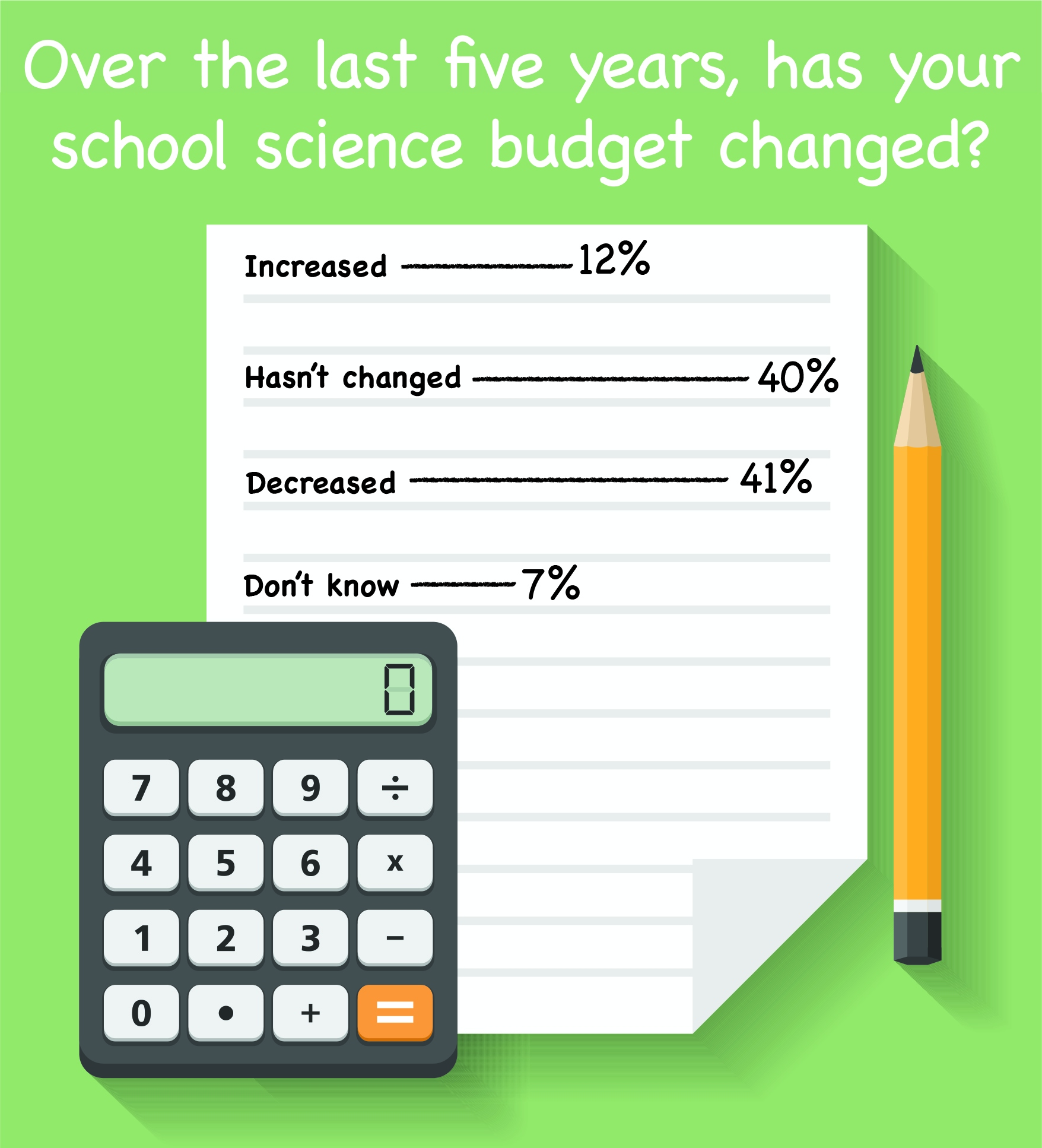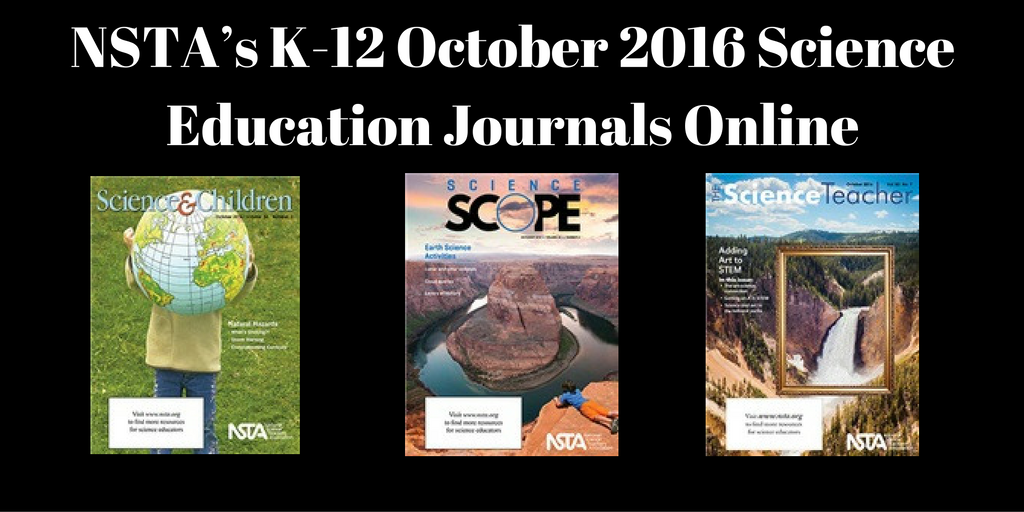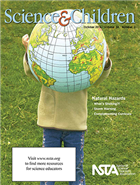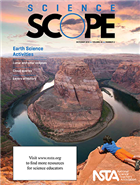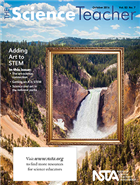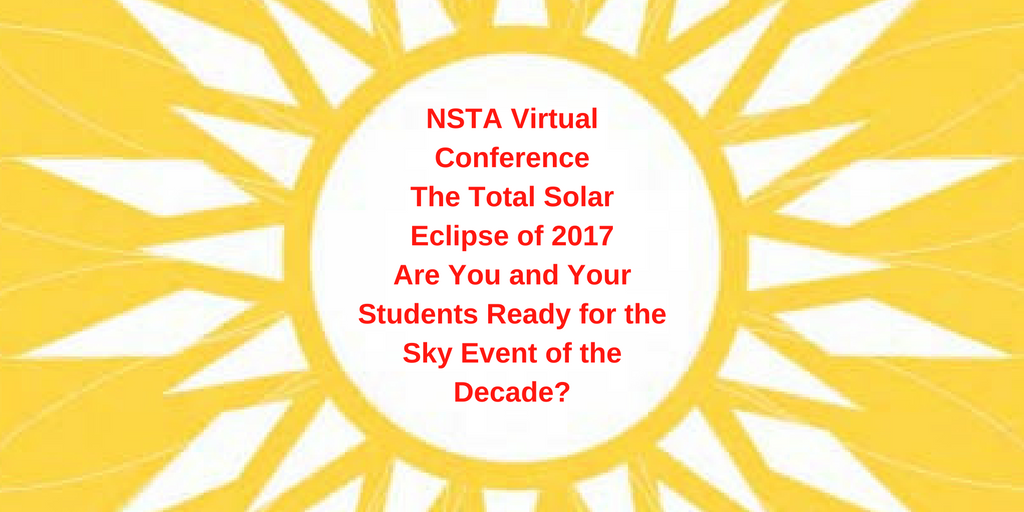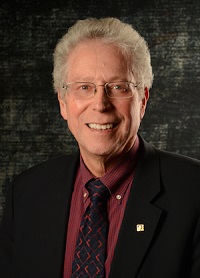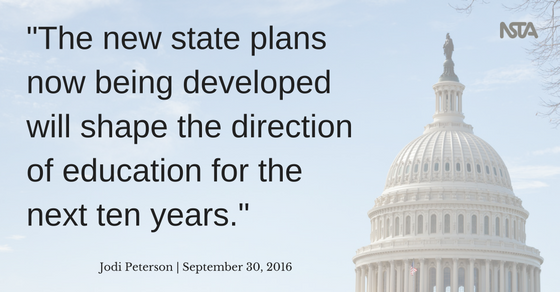Science Educators Still Feel Budget Strain
By Lynn Petrinjak
Posted on 2016-10-03
Five years ago, 67% of science educators participating in an informal NSTA Reports poll reported their typical school budget for classroom supplies was less than $500, and 27% expected to spend more than $500 of their own money on classroom supplies. This summer, Reports again asked educators about their school budgets, and found only 12% report budget increases over the last five years, while 41% say budgets have decreased, 40% say they haven’t changed, and 7% say they don’t know. A majority (61%) say their typical annual school budget for classroom supplies is less than $500; 13% have budgets between $500 and $1,000; 10% between $1,001 and $1,500; and 16% have budgets that exceed $1,500. Only 25% of educators report their school budgets allow for breakage, upgrades, chemical disposal, and/ or annual repairs and maintenance.
Science educators continue to dip into their own pockets to supply their classrooms and labs: 23% reported spending more than $500 of their own money, and another 21% spent between $301 and $500 last year. They believe that trend will continue, with 31% reporting they expect to spend between $301 and $500 in the current school year, and another 33% estimating they will likely spend $101–$300. Consumable lab supplies were the most common items bought (69%).
To extend budgets, 82% reported they share supplies and equipment with other teachers. In addition, 10% apply for grants at least once a semester, while 18% do so annually. About half (51%) of poll participants said they are able to receive donations of supplies or equipment from local businesses, hospitals, or universities, with 22% unsure if they could.
Educators most often turn to colleagues in the same school or district for budget-friendly ideas for labs (55%); social media such as Twitter and Facebook (53%); NSTA journals and books (37%); and other professional publications (34%). (Respondents could select multiple options.)
The tight budgets are affecting students’ experience: 63% report dropping a planned lab at least once a year because supplies were not affordable. Only 11% of respondents said they have never done so.
Would you like to take part in our anonymous poll on educators’ experiences with substitute teachers?
Here’s how science educators say they try to address budget shortfalls:
Beg, borrow, and plead!—Administrator, Elementary, Colorado
Unfortunately, it’s to drop a lab. —Educator, High School, Illinois
Not my favorite, but the most effective is to ask for donations of everyday objects from students. Most of my parents want to help, but don’t know what the classrooms need.—Educator, Middle School, West Virginia
[I offer] extra credit to students [who] bring in lab supplies that can be found within their homes.—Educator, Middle School, Texas
Using NSTA publications are the best resource for inexpensive lab ideas. —Educator, High School, Institution of Higher Learning, Kentucky
Teaching the kids that we can reuse many items [that] might otherwise be seen as consumables. Shopping sales.—Educator, Elementary, Middle School, Illinois
Buying some items with classroom supply list.—Educator, Middle School, Indiana
I love using Freecycle to ask for supplies.— Educator, Middle School, High School, Colorado
Microscale the labs, and sometimes just [doing] a demonstration (which is not my favorite strategy).—Educator, High School, North Carolina
Alas, it’s not my favorite or preferred strategy, but not doing labs when I don’t have the facilities, materials, and equipment.— Educator, High School, Hawaii
Request private donations from philanthropists.— Educator, Middle School, Texas
Donors Choose.—Educator, Middle School, District of Columbia
Reusable supplies.—Educator, Middle School, Montana Calling supply companies to get discounts.—Educator, High School, Michigan
We ask students to pay a lab fee that helps us increase our budget by a substantial amount.—Educator, Middle School, Kentucky
Keeping a continual classroom wish list.—Educator, Middle School, High School, Texas
Reuse, recycle.—Educator, Elementary, Georgia
Try to pull consumable resources from other departments, such as food resources and office supplies from the office.—Educator, Middle School, Florida
Teams and groups sharing materials; cleaning and reusing; order once and copycat.—Educator, High School, California
Go as cheap as possible. Dollar store is visited frequently.—Educator, Middle School, Texas
Provide students “data” to work with had they been able to collect their own with [a] complete inquiry. Only complete one trial per lab group, and use each group’s results as a trial with class data.—Educator, Middle School, Florida
Using labs that are reusable every year or only require household items. —Educator, Middle School, High School, Oklahoma
Pairing up and group work.—Educator, High School, United Kingdom
Do not order separately; all teachers together, and get a quote from the vendor; usually get free shipping and discounted items!—Educator, High School, California
Change the lesson to one that supports [the] idea, if not the experience. —Educator, Elementary, New Jersey
Buy more in bulk when possible to save on cost.—Educator, High School, Virginia
Planning ahead as much as I can, and asking others in my school or district for donations.—Educator, Elementary, California
Buy at secondhand stores and home improvement stores.—Educator, High School, Washington
Borrow supplies.—Educator, Middle School, Oregon
Demos or larger groups.—Educator, High School, North Carolina
We collaborate as a science team so we don’t double-order materials we can all share.—Educator, Middle School, Illinois
Using [a] unit plan to prioritize equipment and supply needs.—Educator, High School, Maryland
I inherited a pencil machine and collect 25 cents for every pencil. I use this to buy consumables.—Educator, Middle School, Colorado
Larger groups and microscale labs. —Educator, High School, Indiana
Having kids work in groups (as opposed to pairs or threes) to make supplies last longer.—Educator, Elementary, Middle School, Connecticut
Collaborate with colleagues to use [one an]other’s leftovers.—Educator, High School, Michigan
I look for activities and experiments that can be done with the same equipment.— Educator, Middle School, Iowa
Small quantit[ies] with large lab groups. No two-partner groups; typically 4–5 students for one small lab.—Educator, High School, Georgia
Taking a lab that uses an expensive chemical and finding a cheaper local alternative!—Educator, High School, Michigan
As a chemistry teacher, [I have] a simple way to connect my content to my students’ daily lives: …to do labs with kitchen chemicals. They’re usually cheap, and I always get kids who come in the next day and tell me they talked about (or did) the experiment again at home with their family.—Educator, High School, Michigan
Encouraging team members to apply for grants as they become available. —Educator, High School, Texas
This article originally appeared in the September 2016 issue of NSTA Reports, the member newspaper of the National Science Teachers Association. Each month, NSTA members receive NSTA Reports, featuring news on science education, the association, and more. Not a member? Learn how NSTA can help you become the best science teacher you can be.
The mission of NSTA is to promote excellence and innovation in science teaching and learning for all.
Follow NSTA
NSTA's K-12 October 2016 Science Education Journals Online
By Korei Martin
Posted on 2016-10-03
Looking to teach elementary students ways to protect themselves from severe weather with the use of models? Ever thought about incorporating the Earth science processes that students saw during their summer vacations into the classroom? Want to learn how art can liven up your high school science classroom? The October K–12 journals from the National Science Teachers Association (NSTA) have the answers you need. Written by science teachers for science teachers, these peer-reviewed journals are targeted to your teaching level and are packed with lesson plans, expert advice, and ideas for using whatever time/space you have available. Browse the October issues; they are online (see below), in members’ mailboxes, and ready to inspire teachers.
While everyone has the potential to experience a natural hazard, children often have an incomplete view of these phenomena. In this issue, students will see how we can protect ourselves from severe weather and learn to mitigate the impacts of natural hazards by designing solutions through models.
Featured articles (please note, only those marked “free” are available to nonmembers without a fee):
- Complementing Curricula
- In Our Neighborhood: Who’s Been Here?
- Science and Superheroes
- Free – Storm Warning
- Free – Editor’s Note: Natural Hazards
- Full Table of Contents
Students often return to the classroom after visiting spectacular examples of Earth science processes during their summer vacations. Why not ask them to share their best selfies with Earth science phenomena featured in the background before you introduce some of the related activities in this issue of Science Scope?
Featured articles (please note, only those marked “free” are available to nonmembers without a fee):
- The Four Strands of Science Learning and the Next Generation Science Standards
- Teacher’s Toolkit: Puzzle Boxes for 3-D Learning About Natural Hazards
- Free – From the Editor’s Desk: Tying It All Together With Earth Science
- Exploring Lunar and Solar Eclipses Via a 3-D Modeling Design Task
- Free – Earth History Theories: Relative Age Dating Lab With Additions for Mining and Mineral Exploration
- Full Table of Contents
The overlap of science and art can provide rich learning experiences for students. Both science and art help develop careful habits of observation, and both engage students with crosscutting concepts like Patterns, Scale, and Proportion. Science teachers appreciate the value of artwork and creativity every time they assign a poster project, design challenge, or creative writing assignment. Perhaps best of all, including the creative arts in science instruction can help dislodge the common misconception that science is simply a dry, tedious accumulation of facts about the world instead of the imaginative, collaborative enterprise that the history of science shows it to be.
Featured articles (please note, only those marked “free” are available to nonmembers without a fee):
- Sculpting the Barnyard Gene Pool
- Science and Art in the National Parks
- Free – The Art-Science Connection
- Getting an A in STEM
- Free – Editor’s Corner: Science and the Arts
- Full Table of Contents
Get these journals in your mailbox as well as your inbox—become an NSTA member!
The mission of NSTA is to promote excellence and innovation in science teaching and learning for all.
Follow NSTA
Next time you want to see a show, go outside and look at the sky. The clouds will put on a show for you with their ever-changing shapes and sizes. This book reveals some fascinating science behind these beautiful displays. Author Emily Morgan answers all kinds of questions: What are clouds made of? Why are some clouds white? Which clouds mean fair weather is coming, and which ones mean rain is on the way? If you could reach those fluffy, floaty puffs, could you jump on them like a trampoline?
Next time you want to see a show, go outside and look at the sky. The clouds will put on a show for you with their ever-changing shapes and sizes. This book reveals some fascinating science behind these beautiful displays. Author Emily Morgan answers all kinds of questions: What are clouds made of? Why are some clouds white? Which clouds mean fair weather is coming, and which ones mean rain is on the way? If you could reach those fluffy, floaty puffs, could you jump on them like a trampoline?
Next time you want to see a show, go outside and look at the sky. The clouds will put on a show for you with their ever-changing shapes and sizes. This book reveals some fascinating science behind these beautiful displays. Author Emily Morgan answers all kinds of questions: What are clouds made of? Why are some clouds white? Which clouds mean fair weather is coming, and which ones mean rain is on the way? If you could reach those fluffy, floaty puffs, could you jump on them like a trampoline?
Next time you want to see a show, go outside and look at the sky. The clouds will put on a show for you with their ever-changing shapes and sizes. This book reveals some fascinating science behind these beautiful displays. Author Emily Morgan answers all kinds of questions: What are clouds made of? Why are some clouds white? Which clouds mean fair weather is coming, and which ones mean rain is on the way? If you could reach those fluffy, floaty puffs, could you jump on them like a trampoline?
From a clock’s ticks in the morning to a father’s snores at night, sounds are everywhere. That’s what an attentive boy discovers as he listens his way through a school day. He perceives that sounds can be loud or soft and low or high. And sometimes, he notices, things like butterflies and wiggling worms are so quiet, he can’t hear them at all.
From a clock’s ticks in the morning to a father’s snores at night, sounds are everywhere. That’s what an attentive boy discovers as he listens his way through a school day. He perceives that sounds can be loud or soft and low or high. And sometimes, he notices, things like butterflies and wiggling worms are so quiet, he can’t hear them at all.
*****
*****
*****
*****
Chasing bubbles
By Peggy Ashbrook
Posted on 2016-09-30
 As the weather turns colder with the changing season, some children come to school without enough layers to be warm during outside playtime. Games and engaging activities can keep children moving, warming them as they stay active. Blowing and chasing bubbles encourages children to stay in motion. If the bubble solution you bought last summer is not holding up and bubbles don’t last, try making your own solution.
As the weather turns colder with the changing season, some children come to school without enough layers to be warm during outside playtime. Games and engaging activities can keep children moving, warming them as they stay active. Blowing and chasing bubbles encourages children to stay in motion. If the bubble solution you bought last summer is not holding up and bubbles don’t last, try making your own solution.
The most widely recommended solution combines water, liquid dish detergent, and glycerine. Some recipes call for adding corn syrup or other form of sugar but it may leave a sticky residue. Many recipes call for Dawn dishwashing liquid to make the longest lasting bubbles.
 Materials Safety Data Sheets list the necessary safety information for products such as soap and glycerin. These products do not require any special precautions, however, guided by the experience of getting soap in my eyes, I encourage children to wear goggles while mixing bubble solution or if they fling it about when working hard to make bubbles.
Materials Safety Data Sheets list the necessary safety information for products such as soap and glycerin. These products do not require any special precautions, however, guided by the experience of getting soap in my eyes, I encourage children to wear goggles while mixing bubble solution or if they fling it about when working hard to make bubbles.
Blowing bubbles is both fun and an experience with a natural phenomena. The National Wildlife Federation’s Family Fun pages suggests we use bubbles as a way to tell which direction the wind is blowing from in the “Watch Weather” activity. Scientific American describes how to do a fair test of 3 different recipes in “Blow the Best Bubbles: A soapy chemistry challenge from Science Buddies.” Spoiler alert! Don’t read to the end of their column until you do your own test and have thought about your own results. The Exploratorium in San Francisco is a “public learning laboratory exploring the world through science, art, and human perception.” Their resources include hands-on, teacher-tested Science Snacks such as the “Bubble Tray,” and a page of bubble formula.
See the delight a child feels at being a competent bubble-blower on The Regents’ Center for Early Developmental Education (CEESTEM) at the University of Northern Iowa short video. The CEESTEM’s “Bubble” page shares many ideas for investigating bubbles and offers safety tips.
Bubble blowing is favored by occupational and speech therapists as a fun and productive activity for children. Share your bubble experiences with the families of your students so they can explore bubble formation scientifically, like the family in ExpeRimental’s video, “Giant Bubbles,” brought to you by the Royal Institution of Great Britain.
 Children of all ages can enjoy watching, making and altering bubbles. Preschoolers can explore what happens to a bubble solution when either salt, sugar, honey or paint is added. The Colorado Department of Education, Colorado State Library has pages on bubble activities for people from babies to adults. Children enjoy using electric mixers as part of my newest favorite bubble play—making foam! See the Early Years column, “Blowing Bubbles” in the January issue of Science and Children for more about ways to make and explore foam.
Children of all ages can enjoy watching, making and altering bubbles. Preschoolers can explore what happens to a bubble solution when either salt, sugar, honey or paint is added. The Colorado Department of Education, Colorado State Library has pages on bubble activities for people from babies to adults. Children enjoy using electric mixers as part of my newest favorite bubble play—making foam! See the Early Years column, “Blowing Bubbles” in the January issue of Science and Children for more about ways to make and explore foam.
While the mechanics and chemistry of bubbles is fascinating, young children gain the most information in a developmentally appropriate way through experience.
Are You Planning Schoolwide or Community-Wide Programs for the August 2017 Solar Eclipse
By Guest Blogger
Posted on 2016-09-30
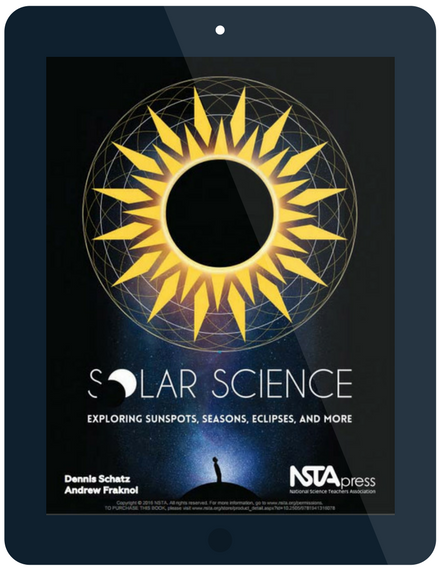 Andrew Fraknoi and I, co-authors of the new NSTA Press book Solar Science: Exploring Sunspots, Seasons, Eclipses and More, want to learn more about what teachers plan to do for the August 21, 2017, eclipse. We are specifically interested in learning about teachers who plan to encourage their students to provide programming (e.g. showing safe observing techniques, demonstrating what causes eclipses) for other students in the school, or for members of the community. Please send a brief description of your plans to Dennis Schatz at schatz@pacsci.org if you will be doing schoolwide or community-wide programs. We plan to produce a resource guide of good ideas for educators who want to serve their schools and community in this way. (If the eclipse is not yet on your radar, you can read more about it in NSTA’s free booklet.)
Andrew Fraknoi and I, co-authors of the new NSTA Press book Solar Science: Exploring Sunspots, Seasons, Eclipses and More, want to learn more about what teachers plan to do for the August 21, 2017, eclipse. We are specifically interested in learning about teachers who plan to encourage their students to provide programming (e.g. showing safe observing techniques, demonstrating what causes eclipses) for other students in the school, or for members of the community. Please send a brief description of your plans to Dennis Schatz at schatz@pacsci.org if you will be doing schoolwide or community-wide programs. We plan to produce a resource guide of good ideas for educators who want to serve their schools and community in this way. (If the eclipse is not yet on your radar, you can read more about it in NSTA’s free booklet.)
Thanks for your help.
Dennis Schatz and Andrew Fraknoi
P.S. If you are still trying to determine what to do to prepare your students to experience the eclipse, you may want to participate in NSTA’s Virtual Conference: Total Solar Eclipse of 2017 – Are You and Your Students Ready for the Sky Event of the Decade?
Dennis Schatz was for many years the Senior Vice President of the Pacific Science Center in Seattle, and is the author of 23 science books for children. He was program director for science education at the National Science Foundation from 2011 to 2015, before returning to Pacific Science Center as Senior Advisor. (See www.dennisschatz.org for more information.)
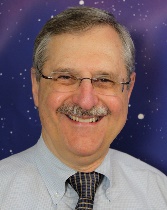 Andrew Fraknoi is the Chair of the Astronomy Department at Foothill College in the San Francisco Bay Area and a former Executive Director of the Astronomical Society of the Pacific. He is the lead author of a college astronomy textbook and appears frequently on local and national radio programs explaining astronomical developments.
Andrew Fraknoi is the Chair of the Astronomy Department at Foothill College in the San Francisco Bay Area and a former Executive Director of the Astronomical Society of the Pacific. He is the lead author of a college astronomy textbook and appears frequently on local and national radio programs explaining astronomical developments.
Solar Science is published by NSTA Press and is available in the NSTA Science Store.
The mission of NSTA is to promote excellence and innovation in science teaching and learning for all.
Future NSTA Conferences
-
2016 Area Conferences
2016 National Conference
Follow NSTA
Legislative Update
ESSA, Money, and More
By Jodi Peterson
Posted on 2016-09-30
FY2017 Appropriations: Congress passed a stopgap spending measure on Wednesday, September 28—two whole days before the September 30 midnight deadline that would have shut down the federal government—that will maintain current funding levels for federal education programs and keep the government open until December 9.
Members of Congress have left town and are back home to campaign for the November 8 election. When the lame duck Congress returns after the election, job one will be to finalize a FY2017 spending bill before the continuing resolution on December 9 runs out.
In anticipation of final Congressional action on FY2017 appropriations bills the NSTA, several state science groups, and other members of the Title IV Coalition recently sent this letter to Senate appropriators, requesting full funding for the Every Student Succeeds Act (ESSA) Title IV in the final bill. As reported in earlier Legislative Updates, the House of Representatives Appropriations Committee approved $1 billion for the ESSA Title IV block grants in their FY2017 Labor HHS and Education spending bill. This amount is $500 million above the President’s budget request and $700 million above the Senate funding ($300m). The program is authorized at $1.65 billion.
ESSA Title IV provides funding to both states and districts so they may provide students with programs (including STEM programs) that ensure a well-rounded education. Read more about Title IV.
Every Student Succeeds Act (ESSA) Implementation—What’s in Your State? Per the new federal education law, state and district leaders must engage in meaningful consultation with a broad range of stakeholders including families, students, educators, private school officials, and community partners when developing state accountability plans and deciding on the use of ESSA funding. States are required to submit their individual plans for ESSA by March, so there will be a lot of activity in the coming months as state boards of education and governors review and discuss state plans. Many believe that the new state plans now being developed will shape the direction of education for the next ten years. Do you know what your state is doing in preparation for ESSA? Teachers and especially state and district leaders are urged to find out more and get involved early; here is a great resource on ESSA and a state activity map: http://understandingessa.org/state-activity/.
ED Issues Guidance on ESSA Title II—Earlier this week the Education Department released guidelines on how states and school districts can use federal funding under the ESSA Title II to better support teachers. The guidance addresses ways states and districts can use Title II, Part A funds to support
- Multiple Pathways to Teaching and Leading;
- Induction and Mentorship;
- Meaningful Evaluation and Support;
- Strong Teacher Leadership; and
- Transformative School Leadership;
Title II grants go to every state, which in turn are required to provide up to 94 percent of the funding as subgrants to local districts for programs that support teachers and schools leaders. Districts can elect to use the funds to “provide professional development and other comprehensive systems of support for teachers, principals, or other school leaders to promote high-quality instruction and instructional leadership in science, technology, engineering, and mathematics subjects.” The Title II A guidance calls for “significant teacher input into the application and planning process for local subgrants (districts). This approach would give educators, parents and community members a meaningful role in determining the best use of program funds to both improve professional practice and help make schools great places to work.” (Watch for a deeper dive on this in future Legislative Updates.)
Webinar on ESSA: Need to know more about ESSA? Join NSTA, state leaders, teachers, and STEM professionals for a 90 minute joint webinar on the new federal education law and its impact on K-12 STEM education, Wednesday, October 5 at 6:30 pm. Speakers during this interactive webinar–co-sponsored by the NSTA, the STEM Education Coalition, and STEMx—will discuss key STEM provisions in the Every Student Succeeds Act, and how stakeholders can help to advocate and support continued STEM learning in their communities. Learn more about the webinar and register here.
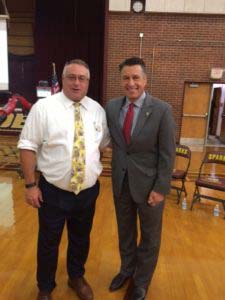
And finally . . .
Governor Brian Sandoval signed a proclamation declaring the 2016–2017 school year the ‘Year of STEM education’ in Nevada during a recent visit to Sparks High School. NSTA President-elect Dr. David Crowther was at the launch of the statewide initiative, where Gov. Sandoval also introduced various ways for students, families and educators to actively participate. Learn more about the initiative here.
Jodi Peterson is Assistant Executive Director of Legislative Affairs for the National Science Teachers Association (NSTA) and Chair of the STEM Education Coalition. e-mail Peterson at jpeterson@nsta.org; follow her on Twitter at @stemedadvocate.
Follow NSTA



